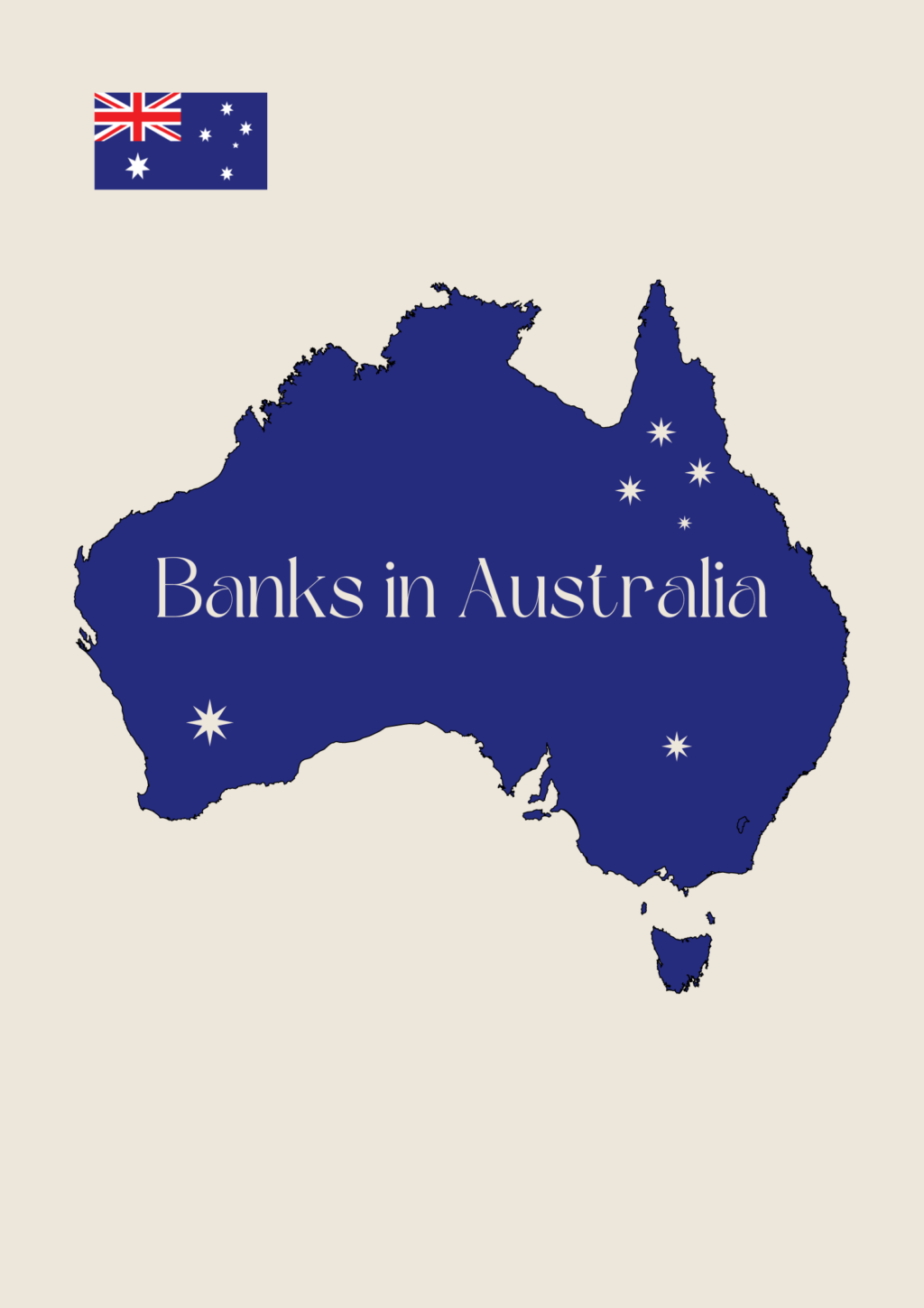Top 10 Banks in Australia 2022

Australia is not just big, but it also exudes a strong feeling of diversity and individuality in its financial system. Australia’s banks go above and beyond to provide business banking, trading on financial markets, stockbroking, insurance, and money management in addition to their standard range of services. There are 53 Australian banks as of January 2020, 14 of which are government-owned.
Also Read:- List of 8 Best Banks in California
The financial system of Australia is significantly influenced by the Australian banking system. Banks include commercial banking, trading on financial markets, stockbroking, insurance, and money management in addition to typical banking services. There are 53 banks in Australia, 14 of which are government-owned. The top ten banks in Australia are described in this guide.
Australia’s banking sector is robust, despite the nation’s high housing prices, rising household debt, and moderate income growth, according to Moody’s. This ranking of the best banks in Australia will serve as a useful starting point for anyone contemplating a career in banking there. See our lists of financial institutions for further information.
List of Best Banks in Australia 2022
- Commonwealth Bank
- ANZ Banking Group
- Westpac
- National Australian Bank (NAB)
- Macquarie Group
- Bendigo and Adelaide Bank
- Suncorp Bank
- Bank of Queensland
- ING Bank (Australia) Limited
- HSBC Bank Australia
-
Commonwealth Bank
With its headquarters in Sydney, New South Wales’ Darling Harbour, this bank is the biggest in terms of assets, deposits, market capitalization, and the number of branches and ATMs it has. Its 49,000 world-class personnel manage a variety of tasks for more than 16 million retail, business, and institutional customers, including deposit taking, insurance, and investment banking.
According to records, the bank had assets worth $980 billion by the end of 2019; deposits were estimated to be around $642 billion, and loans were worth $773 billion. The market value of the bank’s shares, which are traded on the Australian Securities Exchange, is US$107 billion.
-
ANZ Banking Group
With over 1,000 branches managed by 39,000 people and its headquarters in Melbourne, the Australia & New Zealand banking group is the second-largest bank in Australia in terms of assets.
More than 30 markets in Asia, Europe, and North America have seen an increase in the bank’s foreign activities.
At the end of 2019, the bank’s assets were estimated to be worth A$914.8 billion, deposits were close to A$524 billion, and share equity was close to A$53 billion. ANZ was named the best big bank in Australia in the 2019 Mozo Experts Choice Awards.
-
Westpac
With assets worth A$907 billion, this is Australia’s third-largest corporation. The job entails providing a wide range of financial goods and services to customers who are both private persons and corporate entities. It was founded in 1817 and has offices in Sydney. Five divisions offer banking goods and financial services.
Consumer Bank, Business Bank, BT Financial Group, Westpac Institutional Bank, and Westpac New Zealand are among the divisions. Approximately 32,620 people are employed by the bank, which offers a range of services to 13 million customers.
The headquarters of Westpac are in Sydney. The Bank of New South Wales was the name given to this bank when it was first founded. After the bank acquired the Commercial Bank of Australia, this name was changed to Westpac in 1982. This financial institution has been ranked as one of the top 5 banks in the nation ever since. Additionally, it employs more than 35,000 people and serves more than 10 million customers. In addition to Australia, Westpac is present in New Zealand and other Oceania-related nations.
Westpac has faced some controversy despite its overall success. The Australian authorities tracked down the bank because it was committing interest rate rigging. It has also engaged in some wrongdoing.
-
National Australian Bank (NAB)
NAB, which was founded in 1982, is Australia’s fourth-largest bank by total assets ($8476 billion) and deposits ($466 billion) as of the end of 2019.
The bank’s primary services include savings accounts, Visa debit cards, low-rate credit cards, personal loans, business loans, mortgages, insurance, investments, private banking, asset management, retirement and wealth planning, travel and overseas banking, mobile and online banking, foreign exchange, and wire transfers. The bank has its main office in Melbourne, Victoria, where it employs 34,400 people.
The National Australian Bank has its areas of expertise, just like many other banks. This bank has a reputation for offering a broad range of financial services and goods to clients in the wholesale and retail sectors who are of various sizes.
-
Macquarie Group
It was founded in 1969 as an investment bank and today provides Macquarie capital, banking, and financial services, as well as commodities and international markets. Additionally, it provides internet banking, private banking, consulting services, and loans of various kinds.
With a $562 billion AUM, it is the biggest asset manager in Australia. By the end of 2019, the bank’s total assets were estimated to be around A$220 billion.
The Macquarie Group is based in Sydney. More than 15,000 people work there. Additionally, this bank is recognised as the top infrastructure asset management company in the globe. It acts as a premier counsel in mergers and acquisitions throughout Australia. In addition to asset management, Macquarie Group offers services to both individuals and corporations, such as market access, wealth management, asset financing, leasing, research and development for renewable energy sources, and specialised advice.
-
Bendigo and Adelaide Bank
With its headquarters in Bendigo, Victoria, Australia, it is the sixth-largest bank in that country. Personal and business insurance, business banking, investment products, and loan products are among the goods and services offered by Bendigo and Adelaide Bank.
Bendigo and Adelaide Bank currently has over 400 locations after acquiring 25 additional locations when it amalgamated with Adelaide Bank. With client deposits reaching A$78.0 billion, it reported a statutory net profit of A$524.0 million in June 2021.
With 1.9 million customers served by over 7,000 workers and a market value of A$3.3 billion, Bendigo and Adelaide Bank has become a market leader in the home loans banking industry.
-
Suncorp Bank
The seventh-largest bank in Australia, Suncorp Bank provides services in banking, life insurance, home and auto insurance, and superannuation. It began as an agricultural bank in 1902 and eventually amalgamated with Metway Bank.
Suncorp Bank currently runs 423 branches, 157 of which resulted from the acquisition of Promina. It runs 389 retail and business banking locations and has over 13,000 employees across Australia and New Zealand.
Suncorp Bank had assets at A$72.77 billion as of June 30, 2021, and a net tax profit of A$1.033 billion. The company has total deposits of A$28.58 billion and A$12.06 billion in investor loans.
-
Bank of Queensland
The eighth-largest bank in Australia was established in 1863 and is called The Bank of Queensland. There are 3,055 ATMs and 252 branches. Roy Morgan Research gave it a 2021 consumer satisfaction rating of 82.9%.
The Bank of Queensland had A$57.637 billion in assets as of February 2021, a market value of A$5.7 billion, and A$34.685 billion in customer deposits. It declared a 17 cent dividend in the first half of 2021 after making A$154 million in profits.
Over 2,098 people are employed by Bank of Queensland, which has five departments and provides financial services. As of July 2021, these divisions will be Me Bank, Virgin Money Australia, St Andrew’s Insurance, BOQ Specialist, and BOQ Finance.
-
ING Bank (Australia) Limited
A subsidiary of the international Dutch bank, ING Bank (Australia) provides banking services such as personal banking, insurance, loans, and other financial products related to banking. It was established in 1999 and runs as a subsidiary company abroad.
In 2020, it had assets worth over A$73.045 billion and deposits from customers worth over A$46.575 billion. Over 1,380 people are employed by it in Australia. Despite not having its own branches, it has developed into the second-largest lender after the Big Four banks.
ING Bank (Australia) does business through a number of divisions and branches. It provides these services—savings, mortgage, insurance, wholesale banking, lending, and other traditional banking operations—through these firms. ING Bank (Australia), despite its modest beginnings, is currently regarded as one of the top lenders in the nation. Its deposit balance is just under $50 billion, compared to a lending portfolio that surpasses $60 billion. Additionally, with over 30,000 active accounts, this bank offers a sizable portfolio of retirement accounts.
Additionally, this financial institution gets good scores for recommendation and customer happiness. Because of this, many customers are happy to endorse this bank to others. ING Bank (Australia) consequently has a constant increase in customers.
-
HSBC Bank Australia
The tenth-largest bank in Australia is HSBC Bank Australia. Retail, private, trade, financial, and treasury banking are just a few of the banking and financial services it provides. In 2007, The Hongkong and Shanghai Banking Corporation Limited was established as a bank with foreign ownership.
Other services offered by the company include asset management, cash management, and custody of assets. These services are provided by HSBC Bank both online and through a network of 45 branches and offices. It had sales of A$925.07 million in August 2021 and employed more than 1,945 people at the time.
HSBC Bank Australia began doing business as Hongkong Finance in 1964. This bank received its banking licence in 1986. Its headquarters are in Sydney, and it mainly serves the corporate, institutional, and commercial sectors. It provides internet banking services and has a large number of ATM locations. Additionally, customers of this bank can simply perform international transactions in any of the nations where HSBC has offices.








